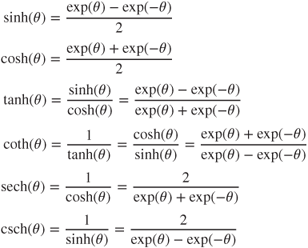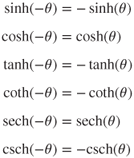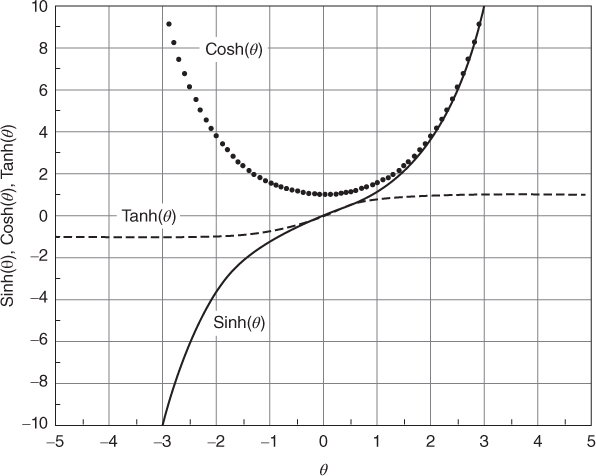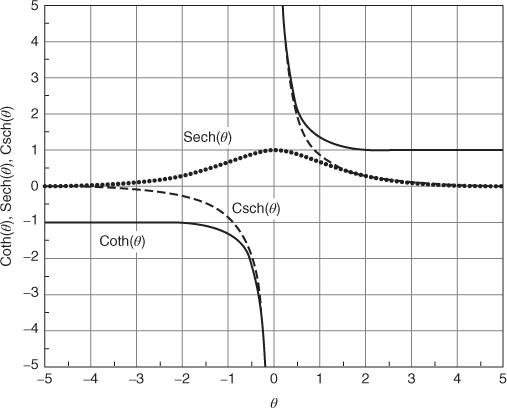Appendix B
Properties of the Hyperbolic Functions
Hyperbolic functions occur frequently when describing conduction in bipolar devices, and it is helpful to list some of their important properties here. The hyperbolic functions are defined as follows:

These functions can be easily visualized, as shown in Figures B.1 and B.2. From these figures we see that sinh, tanh, coth, and csch are odd functions, positive for positive arguments and negative for negative arguments. cosh and sech are even functions, positive for both positive and negative arguments. Thus we can write


Figure B.1 Hyperbolic sine, cosine, and tangent functions.

Figure B.2 Hyperbolic cotangent, secant, and cosecant functions.
It is also useful to note that

Hyperbolic functions of the sum of two arguments can be written
The inverse hyperbolic functions can be written in terms of logarithms as
Get Fundamentals of Silicon Carbide Technology: Growth, Characterization, Devices and Applications now with the O’Reilly learning platform.
O’Reilly members experience books, live events, courses curated by job role, and more from O’Reilly and nearly 200 top publishers.

